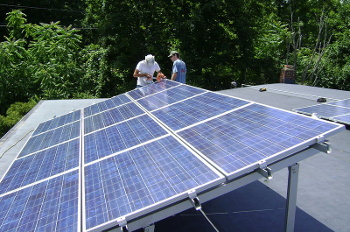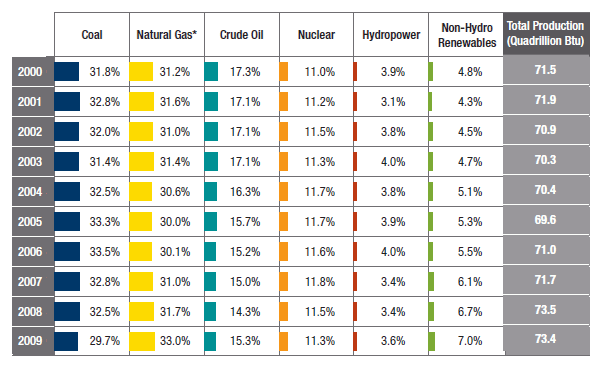Taxing Times for Solar
July 28, 2011
Patents are one way that government encourages
innovation. An
inventor with an issued patent has some protection of his invention over the life of the patent, and he stands a chance of making money from it. The advantage of the patent system has eroded in recent years, since filing fees and other expenses can be too costly for an independent inventor.
Not only that, but a patent acts only as a tool to bring infringers to court, which is another expense. The patent deck is stacked in favor of large
corporations with their resident legal teams.
Another way that government encourages innovation is by providing
research grants to
small businesses, as in the
SBIR process, and providing loan guarantees and tax incentives to help an industry get started. After a time, the government gets paid back many-fold in the income taxes it reaps from employees in these new industries, and various taxes on the industrial product.
I'm reminded of this every time I get my
telephone bill or
electric bill and see taxes as line items. As
Michael Faraday said in reply to a question by
British Chancellor of the Exchequer,
William Gladstone, about the usefulness of electricity, "One day sir, you may tax it."[1]

Installation of a rooftop photovoltaic array near Poughkeepsie, New York.
Poughkeepsie is about ninety miles northeast of my home.
Photo by Lucas Braun via Wikimedia Commons
The
solar energy industry has been making progress in the US because of such incentives, but cash-strapped governments are now trying to cash-in on the industry, often in underhanded ways. As reported in the
Los Angeles Times,[2]
Riverside County, California, had considered a 2% tax on the revenue of solar energy plants as a way of protecting "
cultural heritage" and paying for support of local facilities and services, such as local roads and police. There won't be much cultural heritage worth protecting if the region retreats to a
stone age economy. Fortunately, this proposal was shelved until August 16.[3-4]
Riverside has some of the largest solar energy facilities in
California. Existing and proposed solar farms would cover 185
square miles. Solar developers were surprised by the proposed tax. This brings to mind the
Who Shot Mr. Burns? episode of the
Simpsons in which
Monty Burns erects a giant sunshade to place
Springfield in perpetual darkness. Such a tax would be a virtual sun shade.
The proposed tax was no small matter, since it would have been two percent of
gross receipts.[2] This is the same percentage paid as a
franchise tax by the local electrical utility,
Southern California Edison. The solar generators were quick to point out that their energy was not sold directly to consumers, but to electrical companies like Southern California Edison that are already charged the franchise fee.
One generator,
First Solar, would need to pay $3.5 million per year.
Solar Millennium, which just started construction on its installation, would pay $5.9 million a year. The generators pointed out that they already pay considerable
property taxes and
sales taxes.[2]
The opponents to the tax were not just the solar generators. A spokesman for the
College of the Desert, which has a program in Advanced Transportation Technology and Energy, said that the tax would inhibit hiring of its graduates.[3] Representatives from unions stated that the solar projects help local employment. Unemployment in the region is more that twenty percent, and construction unemployment is about 35%.[2] The
International Brotherhood of Electrical Workers claimed that solar farms in the county could create 600 jobs for its members.[2]
I shouldn't demonize California alone. My own home state of
New Jersey has been putting its own hurdles in the path of solar power development.[4-5] As I reported in a
previous article (US Offshore Wind Strategy, February 15, 2011), New Jersey has one of the highest residential electric rates in the continental US (about sixteen cents per
kWh).
Former Governor
Jon Corzine had set a goal for 30% renewable energy for the state by 2021. Present Governor
Chris Christie has scaled that back to just 22.5%.[4] New Jersey presently has just 9,000
photovoltaic-equipped homes. Such a small number is especially troubling since the state is second only to California in the number of residences so equipped.[5]
The federal government has backed solar and other energy sector industries, such as
oil,
biofuel and
nuclear, with loan guarantees, project funding and research support; but it appears to be backing away from solar and renewable energy mandates while maintaining subsidies for non-renewables. In particular, a portion of an
Energy Department (DOE) loan guarantee program for renewables will expire on October first, and might not be renewed. The DOE estimates that projects under that program generated more than 68,000 US jobs.[5]
There are a few encouraging solar energy programs in place from better times. In June, the DOE helped to guarantee a portion of $1.4-billion in loans for
Project Amp. The project's purpose is to install nearly three-quarter's of a gigawatt of point-of-use photovoltaics on industrial buildings.[6]

U.S. Energy Production by Energy Source, 2000–2009, US Department of Energy, 2009 Renewable Energy Data Book, August 2010, page 8.[7]
References:
- Faraday's reply to William Gladstone, then British Chancellor of the Exchequer (minister of finance), when asked of the practical value of electricity (1850), as quoted in Alan L. Mackay, Ed., "The Harvest of a Quiet Eye : A Selection of Scientific Quotations," Taylor & Francis (1977), p. 56.
- Tiffany Hsu, "Riverside County may add fee to solar installations," Los Angeles Times, June 28, 2011.
- Paul Young, "Supervisors decide to hold off on taxing solar energy providers," Valley News, vol. 26, no. 15, June 29, 2011
- New Jersey Governor to scale back renewable energy goals, Solar Server, June 7, 2011.
- Raju Chebiumand and Erin Kelly, "Cuts threaten solar programs," Daily Record, July 2, 2011.
- Tiffany Hsu, "Gov. Brown pushes 12-gigawatt clean-power goal," Los Angeles Times, July 26, 2011
- US Department of Energy, 2009 Renewable Energy Data Book, August 2010.
Permanent Link to this article
Linked Keywords: Patent; innovation; inventor; corporation; research grant; small business; Small Business Innovation Research; SBIR; telephone; electric; Michael Faraday; British Chancellor of the Exchequer; William Gladstone; Lucas Braun; Wikimedia Commons; solar energy; Los Angeles Times; Riverside County, California; cultural heritage; stone age; economy; California; square mile; Who Shot Mr. Burns?; Simpsons; Monty Burns; Springfield; gross receipts; franchise tax; Southern California Edison; First Solar; Solar Millennium; property tax; sales tax; College of the Desert; International Brotherhood of Electrical Workers; New Jersey; kilowatt-hour; kWh; Jon Corzine; Chris Christie; photovoltaic; oil; biofuel; nuclear; United States Department of Energy; DOE; Project Amp.